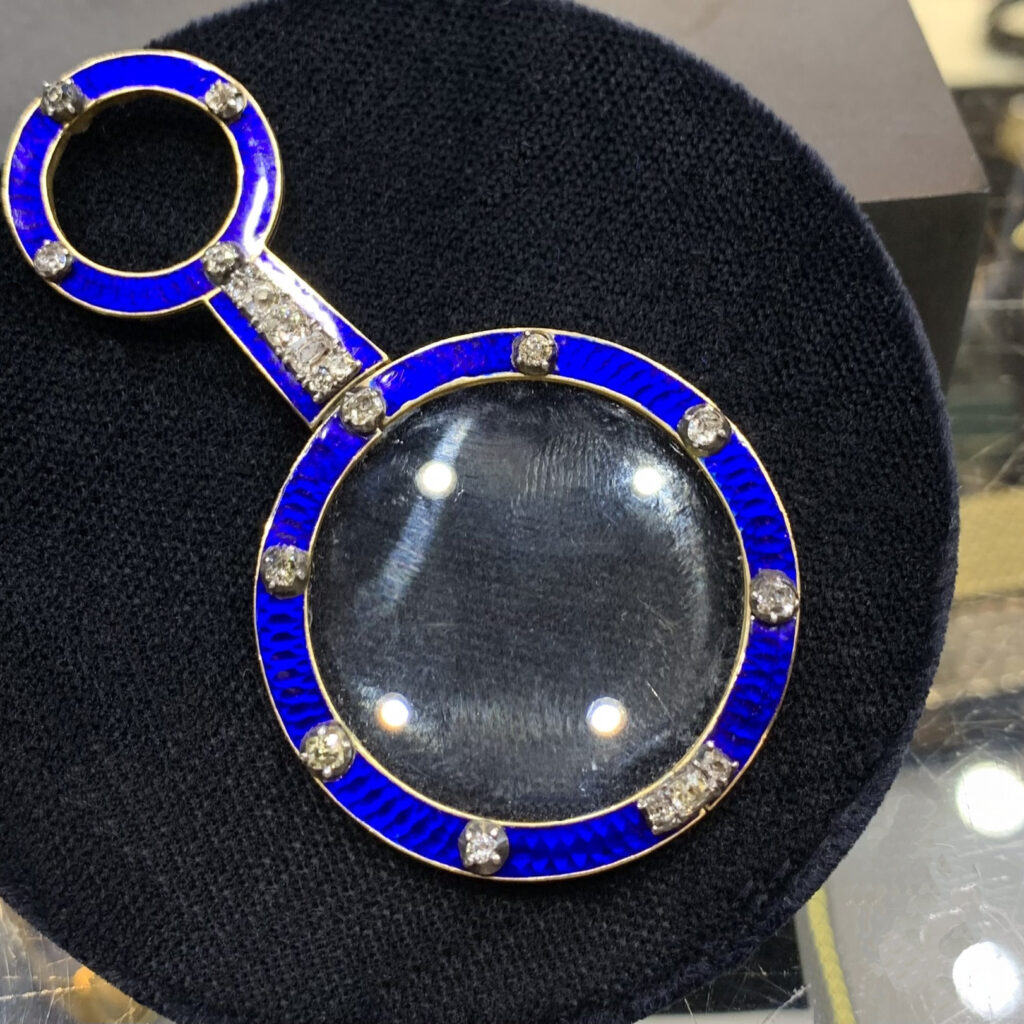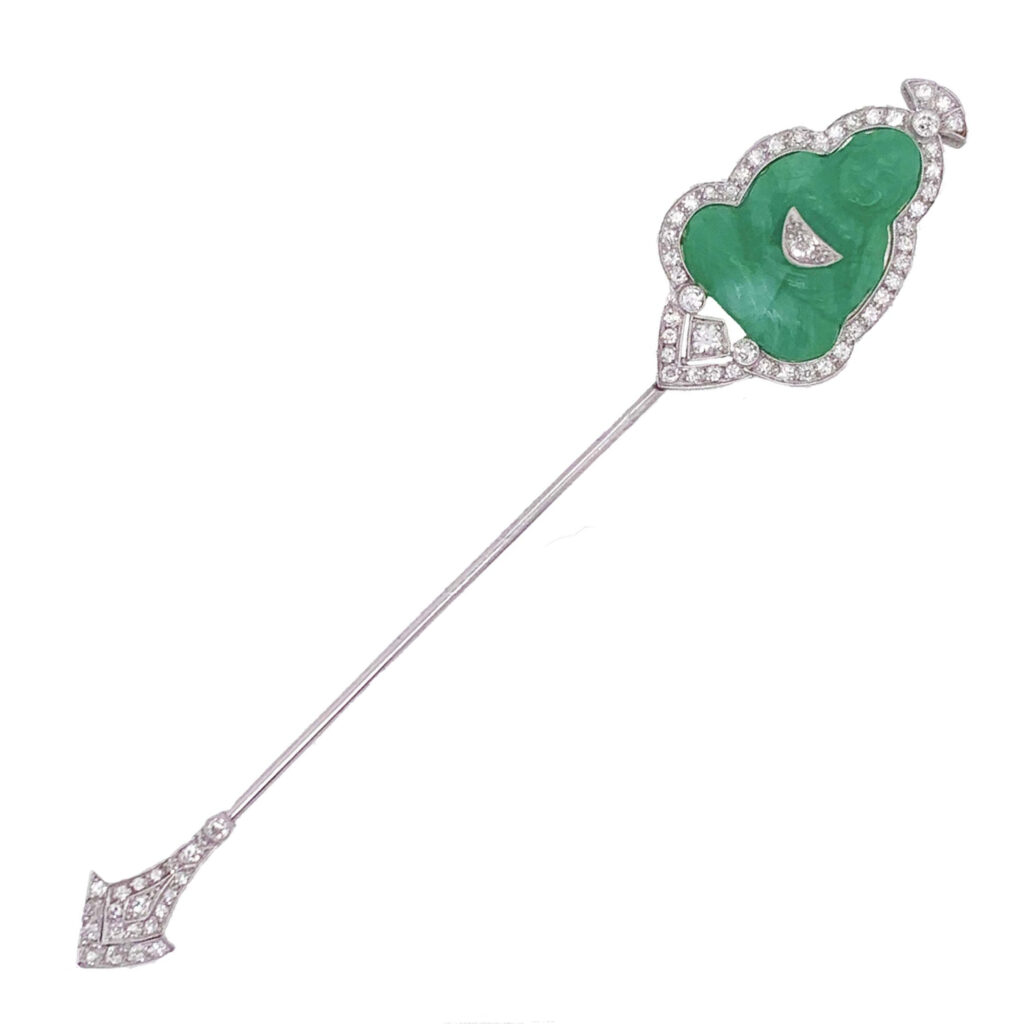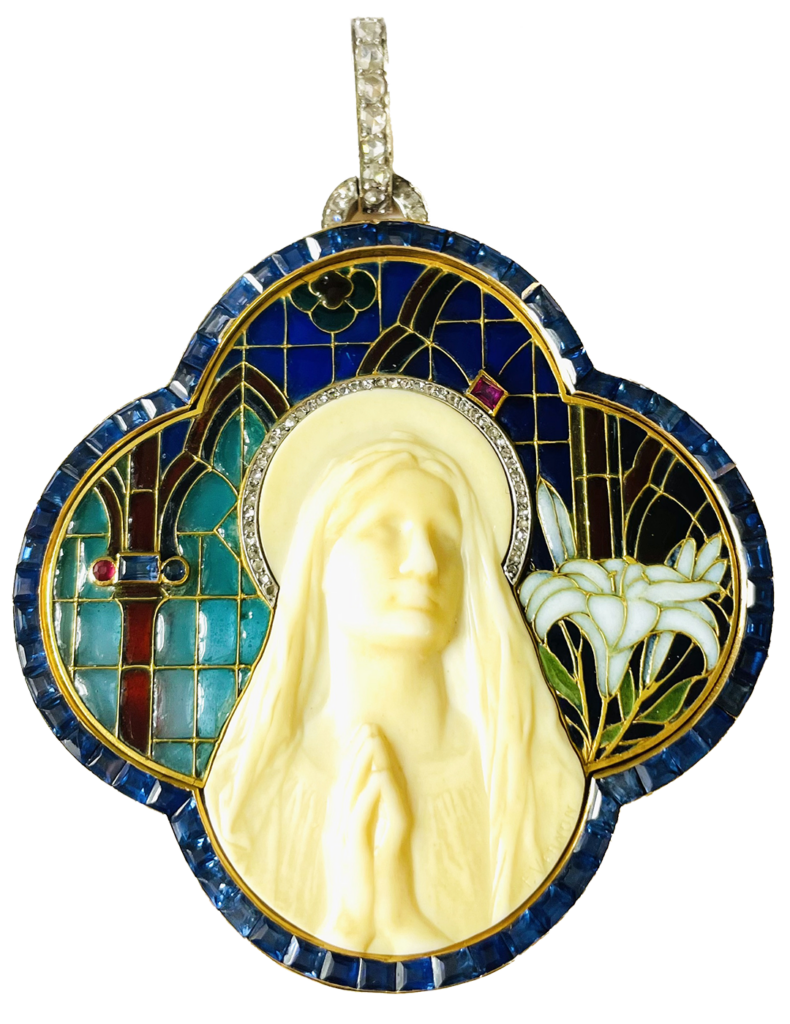Jewelry has a special language all its own that describes pieces either by technique or function. This is especially true for vintage and antique jewelry. The objects and jewelry that people wore, or used, 100 years ago are not always items that are commonly used now. Jewelry making was also different then and some of the techniques used to fabricate jewelry are no longer customary practices. If you’re collecting jewelry, it’s helpful to “speak the same language” as the dealers who are handling it. We’ve compiled a few terms that come up in relation to antique or vintage jewelry and explain exactly what they mean.
Chatelaine
When we read classic literature such as Jane Austen, the Brontë sisters, or others from the 1700s and 1800s, there always seems to be a mysterious character who is called to open a door. That person invariably pulls out a chatelaine with keys, a watch or some other practical object. So what exactly is a chatelaine? It is an ornament with chains that have small hooks so that items such as watches, keys, fobs, seals, scissors, thimbles or other items could be attached. The chatelaine was generally fastened to a belt or pocket. The word means “keeper of the castle” and that is why chatelaines often had keys and were worn by the head housekeeper, or other important members of the household. Some chatelaines were very elaborate and were made of gold and precious gems, others were more utilitarian, depending upon one’s status.
Antique, Georgian era, chatelaine with key wind watch, fob and seal, 11-karat to 19-karat gold, comes with original fitted box, courtesy John T. Haynes.
Lorgnette
A lorgnette is a pair of spectacles that are on a hand held handle rather than handles resting on the ears and nose. Lorgnettes became popular in the 1800s and were generally used as jewelry through the early 20th century. They were often made of silver, gold, horn or tortoiseshell and were embellished with diamonds, gemstones or enamel. They were used mostly by women as it was not considered proper (or attractive) for a woman to wear glasses unless she was reading or sewing. Women often used Lorgnettes at the opera or theater so they could see better. They were also used in high-society so that people could watch each other or something else (sometimes called high-society games), without having to be face-to-face with the subject of attention. What could be more fun than pulling a lorgnette from your handbag when you’re at the opera or theater?
Platinum and diamond Art Deco lorgnette signed Tiffany & Co., (also shown top of page) courtesy Paul Fisher (@paulfisherjewelry).
Quizzing Glass
An important accessory in the Georgian and Victorian eras, the Quizzing Glass is a single magnifying lens mounted in an elaborate handle, often embellished with enamel and jewels set in gold. It was held up to one eye to better see an object. Quizzing Glasses have been around since the 1200s but became popular in the 1700s. They were often worn on a ribbon or chain around the neck by men and women, serving as a piece of jewelry as well as a way to see better. Sometimes a Quizzing Glass would have a secret locket or compartment where a small object was hidden. During the Regency and early Victorian eras, Quizzing Glasses were favored by dandies in the Beau Brummel set as well as by fashionable women. Today, a Quizzing Glass can be easily worn as jewelry and it could come in quite handy when you want to quickly read the small print on the bottom of a lipstick tube without having to rummage through your handbag for glasses.
Diamond, 18-karat yellow gold and enamel Quizzing Glass, Victorian, courtesy Anthea A G Antiques, (@Anthea_gesua).
Jabot Pin
So what exactly is a jabot pin? A jabot is a ruffle, or lacy piece of fabric, that decorated men’s shirtfronts in the mid 1700s. The jabot pin was used to hold the fabric in place. Jabot pins have a decorative motif on the top and bottom of a long pin. It is placed so that the decorative elements show and the pin itself is hidden by fabric, which separates the top and bottom of the jabot pin. The jabot pin dwindled in popularity as styles changed, but had a resurgence during the Art Deco era when they were again fabricated using designs that were typical of that time. Today, jabot pins are easily worn on a lapel for a sophisticated style statement.
Carved jade Buddha, diamond and platinum Art Deco jabot pin, courtesy Paul Fisher (@paulfisherjewelry).
Plique à Jour
Ever look at a piece of Art Nouveau jewelry and wonder how the enamel gets its stained glass look? It comes from a special enameling technique known as plique-à-jour, which is French for letting in daylight, or open to light. Technically challenging, plique-à-jour is a translucent enamel held in place by a metal framework, rather than with a metal or glass backing. Openings, sometimes called cells, in the metal filigree are filled with enamel and a temporary backing is put in place for this part of the process. Once the enamel is baked and cooled, the temporary backing is removed sometimes in an acid bath. The result is a vibrant colored translucent enamel, perfect for bringing the flora, fauna, insects and other naturalist elements found in Art Nouveau jewelry to life.
Art Nouveau plique-à-jour enamel, diamond, ruby, sapphire, bone and 18-karat gold Madonna pendant with platinum chain. Courtesy Ernst Faerber (@ernstfaerber).
Next time you’re reading a book and someone pulls out a chatelaine, or reaches for a quizzing glass, you’ll know exactly what they’re talking about.
Authored by Amber Michelle





